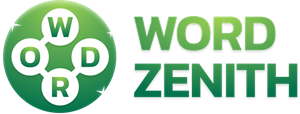Words are the foundation of communication. They are also keys that can unlock knowledge and open up new worlds of imagination. But how did they come into being? What secrets lie within the alphabet? Join us on an exciting journey as we go through five quests that will help reveal these language riddles. Each mission promises lots of fun and a chance to learn something interesting about our global vocabulary from where it started to how it has changed over time.
Quest 1: The Birth Of The Alphabet
In The Beginning: How It All Started
The alphabet is an ancient system of symbols representing sounds. To find out more about its history, we need to travel back in time when people were still trying to communicate beyond basic gestures. This was long before any written texts had been invented, however, signs left on cave walls or etched onto stones might have served this purpose too. For many years mankind experimented with different forms of writing such as hieroglyphs, pictorial characters used mainly by Egyptians, but none proved as efficient and flexible as alphabetic script.
Decoding Ancient Scripts Proto-Sinaitic Script
Our next stopover is Egypt’s Sinai Peninsula where archaeologists discovered what could be the world’s oldest known alphabet called Proto-Sinaitic script dated around 1500 BC (during Bronze Age). Unlike previous systems, this one featured only consonants denoting spoken sounds rather than images representing objects or ideas , a major breakthrough in terms of simplicity and versatility which laid foundations for all later scripts including our own today.
From Phoenicia To Greece And Beyond
Eventually traders from city-states like Tyre or Sidon must have carried their improved writing systems across the Mediterranean into other parts such as Greece where they were further modified. These seafarers known as Phoenicians used to sail all over this sea basin for centuries establishing colonies along its coasts thus becoming first ever true “masters of commerce”. They would trade with people from different cultures whose languages didn’t share many common words, therefore needing some means of communication. Greeks then adopted Phoenician alphabets adding vowels among other changes leading ultimately not just Western but also most other present-day ones too.
Quest 2: Tracing Linguistic Change
Tower Of Babel – Many Languages One World?
Our second task involves investigating language evolution in relation to human history. According to the biblical account Tower Babel was built somewhere in Mesopotamia (modern-day Iraq) by mankind united under a single speech community which angered God who punished them by confusing tongues resulting in numerous different dialects we know today. Although the story itself may be mainly mythological there are still certain facts about linguistic diversity it portrays that cannot be ignored.
Trees And Branches Language tree
As species diverge over generations, so do their tongues change over time into new varieties. Similarly linguists classify various spoken forms according to shared ancestry or other similarities creating what they call language families’ trees’. For instance within the Indo-European family English Spanish Hindi belong while Mandarin Tibetan come under Sino-Tibetan group etcetera, thus demonstrating interconnectedness between peoples through our different ways of talking and writing each other’s languages.
Changing Times – Evolutionary Linguistics
Languages are not fixed entities but living organisms which adapt themselves with time, context, environment etc. Phonological shifts, lexical borrowings, grammatical simplifications among factors that drive alterations in society culture technology . Studying words grammar across ages offers valuable insights into social forces behind such transformations as well
Quest 3: The Power of Words
Lovers of Language
The ability to inspire, educate and incite action, all tucked within words. This journey pays homage to those who have mastered the art of storytelling and skilled manipulation of words. Beginning from ancient poets like Homer who told epic tales through Shakespearean playwrights to contemporary novelists and lyricists, these people help shape our understanding about ourselves and the world around us.
Metaphorical Magic
Metaphor, simile, symbolism, these are but a few tools writers use when trying to communicate complex ideas or emotions with greater clarity by painting vivid pictures in their readers’ mind’s eye. A metaphor evokes powerful associations which may resonate across different cultures even after centuries have gone by such as likening love unto rose or time like river does. Our quest endeavors into this figure of speech called metaphor for its timeless contribution towards better expressions through languages.
Language & Identity Representation
Words do not merely reflect society back at itself, they also mold our perceptions and identities too! Inclusive language acts as an affirmation that everyone’s experience matters equally while exclusive terms can work against social justice efforts thus robbing marginalized communities of such power which should have been given them by using more appropriate words within their given contexts. May it be gender neutral pronouns or politically correct vocabulary whenever referring to any historically oppressed group, let us therefore learn how best we may employ language so that we uplift each other up instead of tearing one another down always.
Quest 4: The Alphabet of the Future
Digital Revolutionizing Writing
We live in a world dominated by technology where everything seems interconnected digitally hence transforming even basic units such as alphabets themselves too need reevaluation within this digital era. From emojis down to hashtags plus abbreviations commonly represented as acronyms known widely through memes, all serve as new forms created due changes brought about due evolution on how we write but not only that also communicate thereby making our understanding different languages more accessible. What if these changes were adopted universally? How might they revolutionize communication further still?
AI Meets NLP
Everyday there are advancements made within the artificial intelligence (AI) field and with them comes an increased understanding of natural language processing (NLP). For instance, there is GPT-3 which creates human-like text while maintaining context awareness effectively amongst other AI-powered models used for generating texts. So now let us get into the quest where we will look at various intersections between languages as powered by our current level of technological advancement in the form of NLPs and what it means for communication evolution over time.
Keeping Our Tongues Safe!
As technology continues to advance at such a rapid pace, it becomes essential that endangered languages should be protected alongside preserving linguistic heritage amidst these changes brought about by today’s digital world. Language does not just enable humans to communicate with each other but also acts as storehouse culture, history identity so when one disappears much knowhow goes away too. Therefore this adventure seeks to celebrate diversity through promoting preservation efforts all around us, especially those areas where richness exists. The greatest number of diverse communities live together peacefully without any threat being posed towards their respective mother tongues.
Quest 5: The Adventure Never Ends
Beyond Words
Though we may have reached the end journey now however nobody can ever claim to know everything about language, thus the world always expects us to continue learning new things concerning words forevermore. As living organisms grow so does their awareness henceforth if they do not wish to become stagnant creatures unable to react properly within rapidly changing environments then necessary steps must be taken to ensure continuous growth takes place even after completion of this particular alphabet expedition itself thus enabling people to appreciate power connecting inspiring transforming lives using verbal expression. The next great challenge awaits those bold enough to venture into uncharted territories where many mysteries lie hidden behind strange combinations of letters known commonly as words.
Conclusion
Words are potent agents of change, capable of transcending time and space to unite diverse cultures across generations. Through the alphabet adventure, we have traced the beginnings of written communication, witnessed the evolution of language itself, and experienced firsthand its transformative ability. In an increasingly digital world where communication seems more complex than ever before — let us not forget that every individual has their own unique way of expressing themselves through speech or writing. For this reason alone should be cherished as something beautiful because within each letter lies a universe waiting for exploration by curious minds around the globe.



